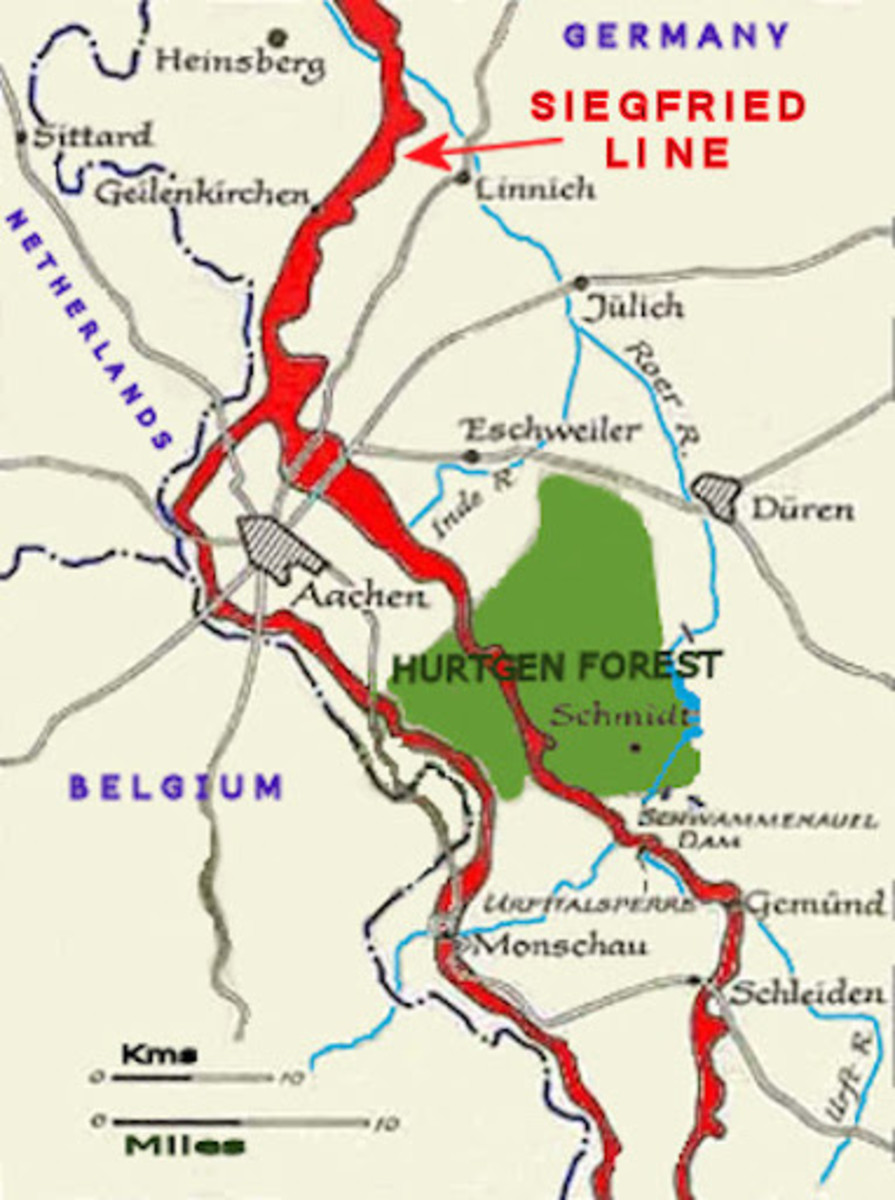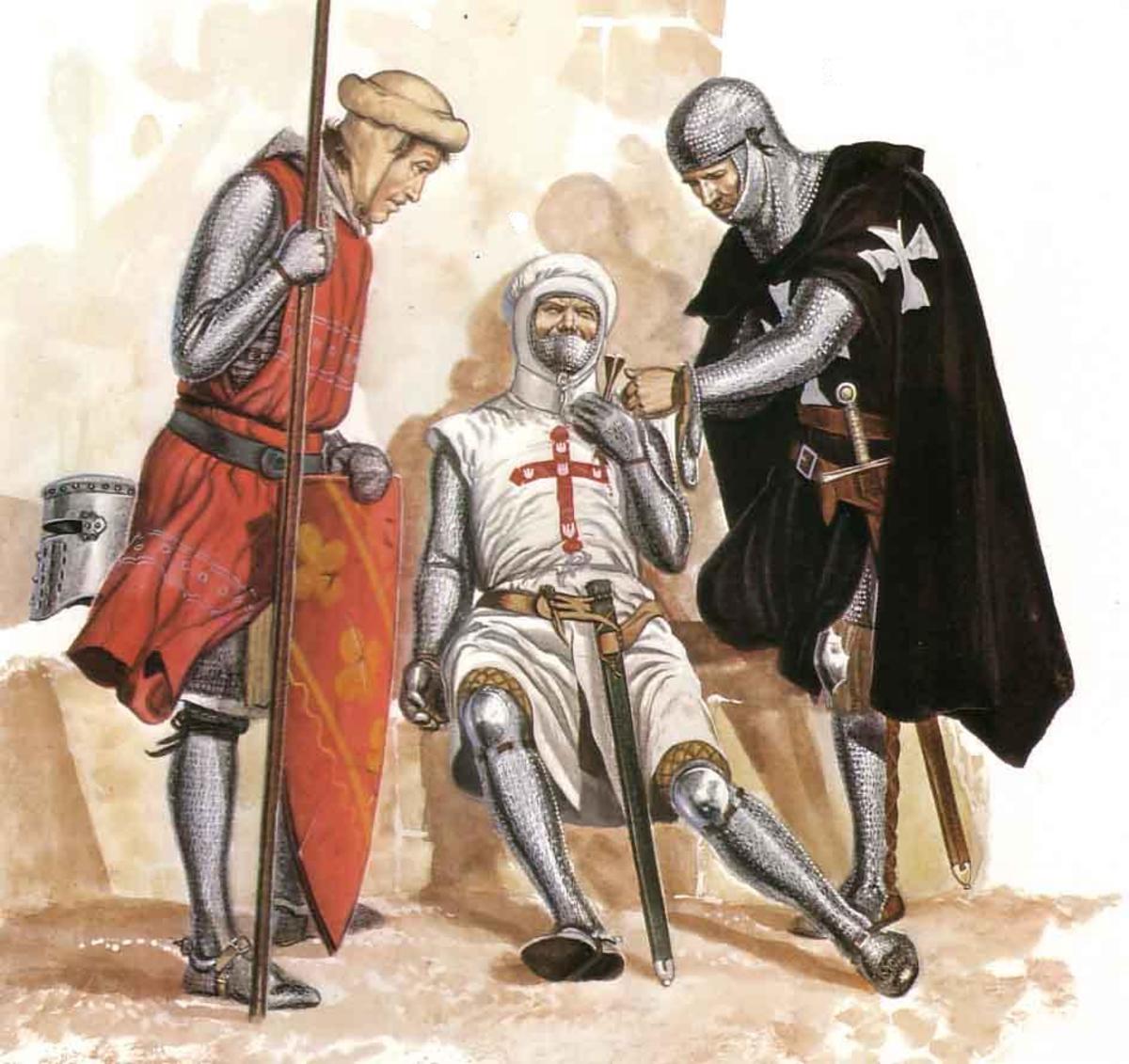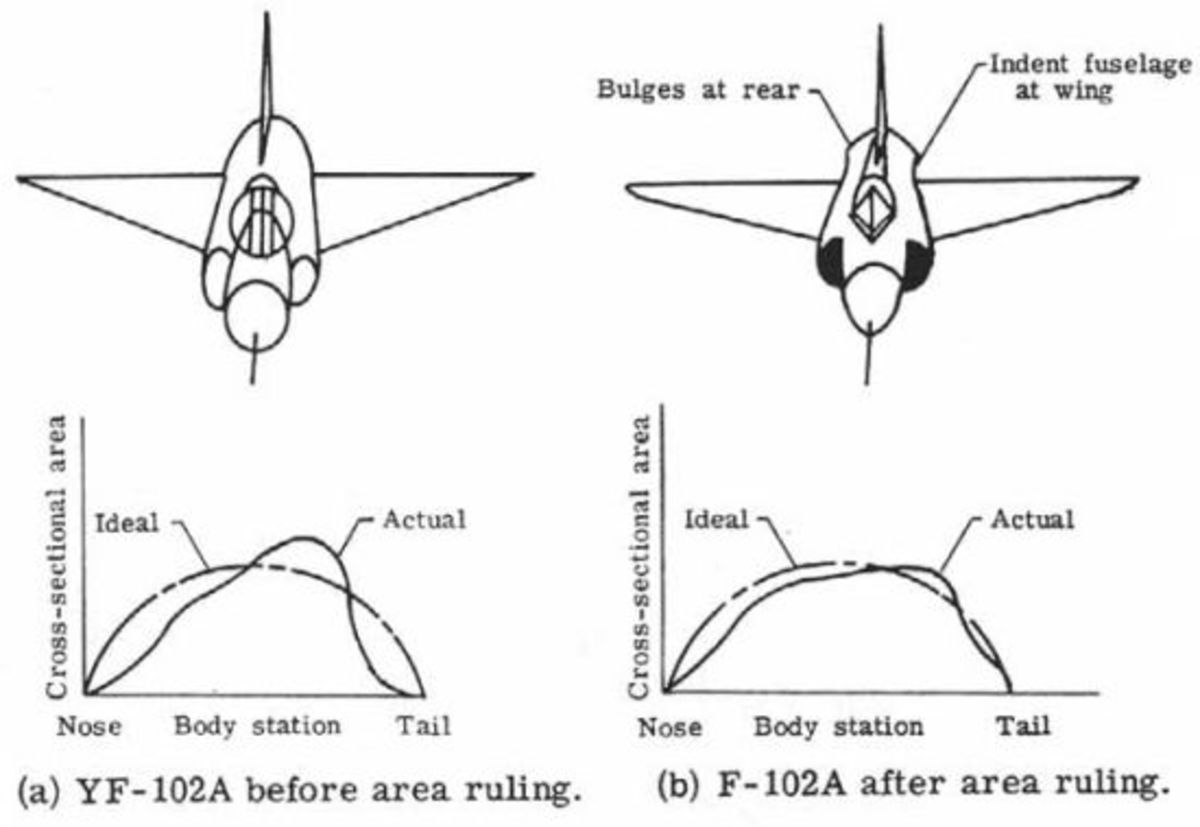German and French Military Forces in the Ukraine, 1918
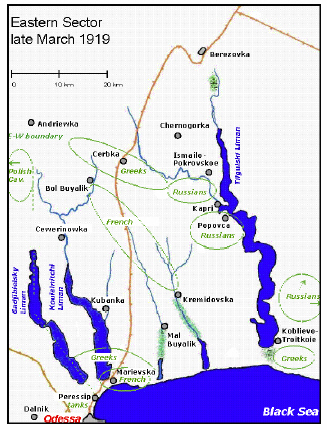
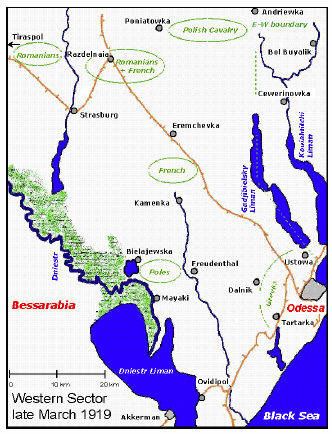
The expedition in Southern Russia was motivated by the Bolshevik uprising that threatened the Black Sea coast to Bessarabia near Rumania. The Russian Civil War had started in 1917, and the confusion still reigned when the French decided to intervene to protect their military and civilian interests. The French thought that perhaps they could create a Ukrainian colony of sorts because of its vast farmlands that could feed other French colonies.
The French General, Berthelot, demanded that twelve divisions to occupy the area: three French, six Rumanian, three Greek. In reality, only twelve French supplied battalions from the 156th Division (December 1918) and by March, 1919, the 30th Division had arrived. These battalions had been demobilized and reduced in strength. Morale was poor. Also arriving was the 11th Rumanian Cavalry Division. This was the occupying force in the Ukraine at this time. France chose to send not their best troops, but their marginal ones.
Bessarabia proclaimed itself part of Rumania (27 March 1919). This area went into complete anarchy due to dissidents and the Bolsheviks.The Rumanian government decided, in January 1919, to interfere by sending two infantry divisions and two Cavalry divisions. The 11th Division was at Chisinau (26 January) and they suppressed (7 February) the rebels at Tiraspol. The 13th Division, aided by a river flotilla, arrived March 12th. A group of Russian volunteers (2.000 men, 1.900 officers) assisted from the White side. Two battalions, two squadrons, two batteries were the Polish contingent.
The 1st Greek Corps’ (Nider), was composed of 34th regiment (2nd Division), disembarked at Odessa on 20 January, 1919, and followed-up a month later by its second echelon. General d'Anselme commanded the groups of divisions on January 14, his headquarters was at Odessa.
The French inherited a most dangerous situation, which required a political finesse .On the one hand, the Austrian- German troops stationed in Russia were part of the armistice (about a million people).The Germans were reluctant to help the French and Bolsheviks attacked and sabotaged wherever they could.
The Austrian\German forces had been in the area since March 1918. Odessa, was occupied by the 212th and 217th Divisions. Later, the 21st Division penetrated into the Crimea; the Bavarian Cavalry Division and the 29th regiment of Bavarian infantry arrived 19 April. By May 1st, Germans were in Sébastopol . German forces included five Corps’ with: it 7th ,11th, 15th, 16th, 20th, 22nd, 45th, and 4th divisions. The 35th division was in reserve. By late March, 1918, the 91st, 92nd 93rd, 95th, 212th, 215th, 224th infantry divisions; three cavalry divisions had also arrived in South Russia. The Germans could have easily caused way more problems than they did, so in that sense, the French were lucky! After the French units arrived, the 15th German division moved to Nikolaïeff and the idle time proved damaging to some Germans who were influenced by the Reds. Its officers, lacking in all authority, failed to control some men. The Germans delayed sending delegates to Kharkov, to negotiate with the commissioner of Moscow. Vice-Admiral Hopman (the former commander of the German fleet of the Black Sea), was sent to delay the implementation of armistice in South Russia, and to apprise the French authorities of the state of affairs and to await instructions. Fortunately, General d'Anselme received information on the arrival of a couple of battalions from the 7th Greek Regiment hurried from Salonica. Destined for Nikolaïeff, Anselme invited Admiral Hopman to prepare for the relief of German soldiers according to the armistice. Hopman, dragged his feet about this, allowing his men to be disruptive to its implementation.Nearby, there was close danger from an attack by red forces. Gregorieff , controlled Red forces near Ekaterinoslav and threatened Nikolaïeff and Kherson. The Reds entered Kiev and advanced towards Kharkov opposed by White Forces near the Sea of Azov. His military equipment came from the older Austrian-Hungarian stockpiles, they were no substitute for German soldiers.
Petlioura, another Red leader, penetrated into Odessa on Dec.10 1918, but his force of 1.500 volunteers were afraid to march on the harbor defended by French seamen and 300 Poles. By December 18, the battalions the French 156th division (Général Borius) took possession of the city. The French chased the Reds hundreds of kilometres to the north of the city and north-easterly to Nikolaïev. Despite the French presence, much civil unrest continued with 100,000 armed civil workers on strike in Odessa, and the 40.000 blue-collar workers in Nikolaïev,who were provoked by the Germans; the 20.000 blue-collar workers of Kherson received their orders from Grégorieff, all of them were pro-bolshevik. The French had stepped into a hornet’s nest and by April 1919, they would leave the Ukraine to the Reds.




